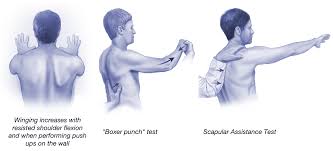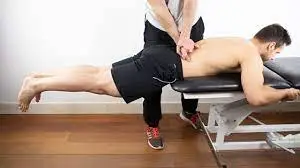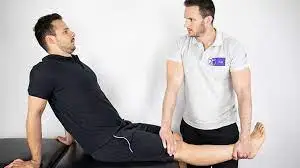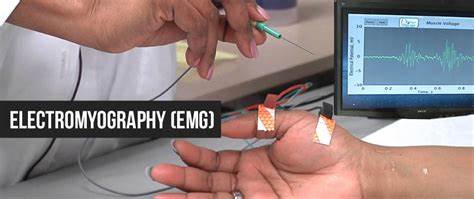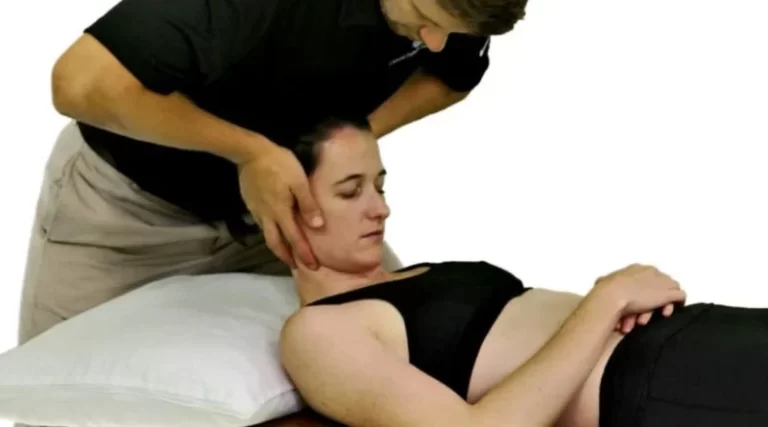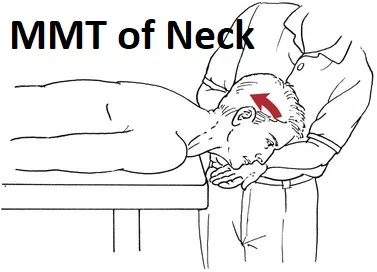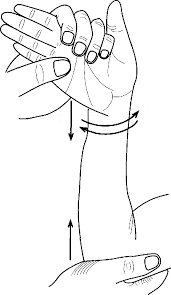Serratus Anterior Test
The Serratus Anterior Test is a clinical examination used to assess the strength and functionality of the serratus anterior muscle, which plays a crucial role in stabilizing the scapula against the thoracic wall.
This muscle is essential for movements involving the shoulder and upper limb, especially in overhead and pushing activities. Dysfunction or weakness of the serratus anterior can lead to scapular winging, shoulder instability, and impaired arm elevation, making this test valuable in diagnosing shoulder and upper back issues.
Table of Contents
Objectives:
- The wall push-up test is the most widely used method for identifying scapular winging caused by serratus anterior dysfunction. The difference between scapular winging and scapulothoracic abnormal motion (STAM) may not be able to be made using the wall push-up test (WPUT).
- The shoulder flexion resistance test (SFRT), an alternative physical examination method that we believe is more useful to diagnosing serratus anterior dysfunction, as the primary cause of STAM since it is more particular and accurate.
- Alterations in dynamic scapular posture resulting from muscle control of the scapulothoracic articulation are called scapulothoracic abnormal motion (STAM). Periscapular muscular differences inhibit or modify the scapula’s normal multiplanar motion and scapulohumeral coupling, which affects the glenohumeral joint, diminishes the arm’s functional range of motion and power, and Raises the possibility of dynamic nerve compressions and excruciating impingement.
- The scapula should stay stable on the chest wall, and its distal aspect has to extend anteriorly (protract) on the wall and rotate externally significantly to allow acromial elevation In addition, when doing normal glenohumeral elevation, avoid glenohumeral impingement. STAM can result from an abnormality in the normal mobility of the pectoralis minor and serratus anterior, with the medial scapular borders more prominent.
Purpose:
- The test assesses both dysfunction or weakening of the serratus anterior muscles and scapular winging.
Test:
- Wall-Pushups Test
- Punch out Test
- Shoulder Flexion Resistance Test
Wall Pushups Test:
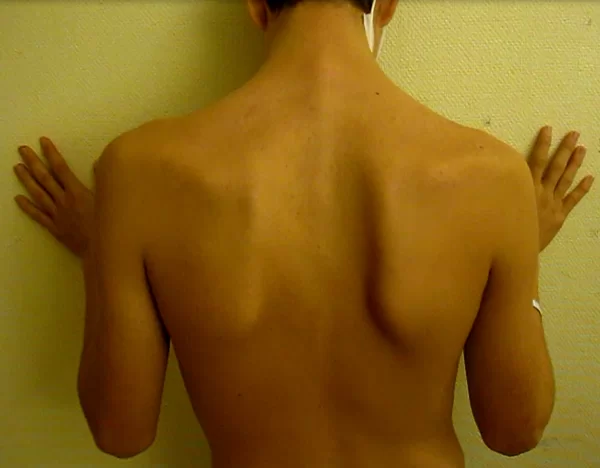
- The Patients facing a wall, their shoulders were raised to a horizontal position, their elbows were extended, and their wrists were extended, as previously mentioned, during the WPUT. Examining the position of their scapula, patients’ hands were placed against the wall and their elbows were slowly bent to allow their body weight to travel closer to the wall. The results of the WPUT test were considered positive in the instance of scapular winging (STAM).
Punch Out Test:
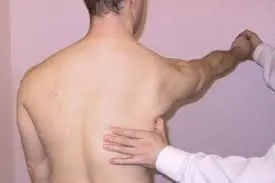
- The patient is either sitting or standing, with their hands resting on a wall or other stable surface, their arms lifted to shoulder level, and their elbows extended to a 90-degree angle.
- Examiners watch from behind the patient to look for winging or unusual movement of the scapulae.
- Next, the patient is told to use their hands to press against a wall or other surface while the examiner resists their movement.
- Examiners keep watch for any unusual winging or movement of the scapulae when pushing.
- The test is re-performed with the patient’s arms positioned in various directions to assess the serratus anterior muscle from multiple angles regarding strength and function.
Shoulder Flexion Resistance Test:
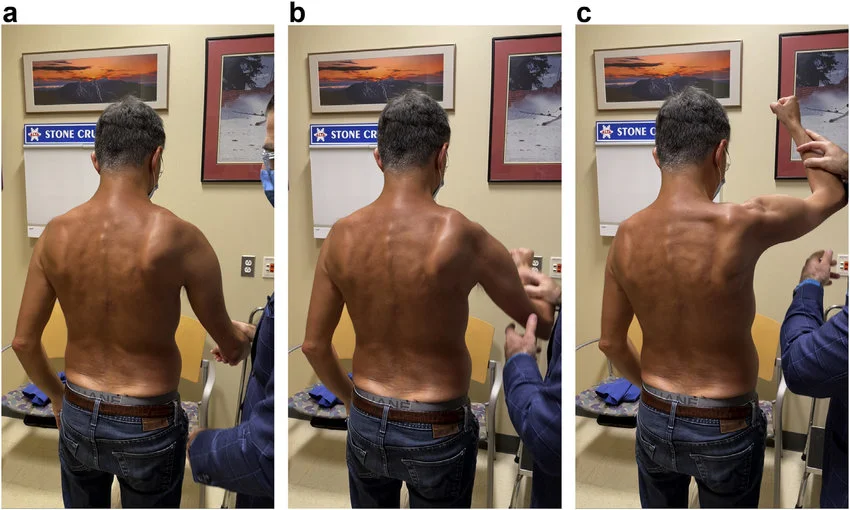
- The recently created SFRT exam was also used to assess the patients. The physician does the SFRT while standing in front of the patient’s affected extremity from the posterolateral aspect. The patient’s shoulder is passively positioned at 30, 60, and 100 degrees with the elbow extended and the forearm rotating neutrally.
- As a “break test,” the therapist gives the patient instructions to aggressively resist a downward-directed force at each specified degree interval. The physician carefully assesses the scapula’s location on the chest wall, examining the inferior scapular pole’s elevation, rotation, and translation consistent with a winged scapula (STAM). Scapular winging with resisted forward elevation is referred to as positive SFRT.
Positive Sign:
- During the pushing motion, the scapula may wing out or move irregularly, and if the serratus anterior muscle is weak or not working properly. This could be an indication of a possible muscular injury.
FAQs
What is the special test for serratus anterior?
Use the Push Out Test or Serratus Anterior Strength Test to evaluate scapula winging and serratus anterior muscle weakness. test of shoulder abduction. The therapist exerts an opposing downward force against the upward rotation of the scapula and the abduction of the scapular plane, which occurs between 120 and 130° in the shoulder.
What happens if the serratus anterior is damaged?
The long thoracic nerve is the only nerve that innervates the serratus anterior, also referred to as the “boxer’s muscle.”The muscle becomes paralyzed when damage to this nerve occurs, and a condition known as a winged scapula.
Does serratus anterior affect posture?
The serratus anterior muscle is essential for proper posture and upper body function, even though you might not be aware of this. This muscle, which is often ignored is essential for proper posture and gait.
Does serratus anterior stabilize the shoulder?
The serratus anterior’s main functions are to move the scapula forward and around on the thoracic cage and to stabilize it during elevation because of its multiple attachment sites. Scapular abduction, also known as protraction, is the movement of the scapula forward onto the thoracic cage.
How does the serratus anterior function during abduction?
The serratus anterior and trapezius muscles work together to control the rotation and movement of the scapula, allowing the arm to move through its full range of motion. They especially make it easier to abduct the arm upward from a 90-degree angle.
References:
- Lohre, R., & Elhassan, B. (2022). Examining serratus anterior dysfunction: shoulder flexion resistance test or wall push-up? JSES International, 6(5), 859–866. https://doi.org/10.1016/j.jseint.2022.05.002
- Shoulder Orthopaedic Test: Serratus Anterior Strength/Punch Out Test. (n.d.). https://www.matassessment.com/blog/serratus-anterior-strength-test
- Serratus Anterior Strength Test | Shoulder Muscle Assessment. (2024, May 20). Physiotutors. https://www.physiotutors.com/wiki/serratus-anterior-strength-test/
- IJspeert, J., Kerstens, H. C. J. W., Janssen, R. M. J., Geurts, A. Van Alfen, N., Groothuis, J. T., and C. H. (2019). Validity and dependability of handheld dynamometry for Serratus anterior. BMC Musculoskeletal Disorders, 20(1). https://doi.org/10.1186/s12891-019-2741-7

